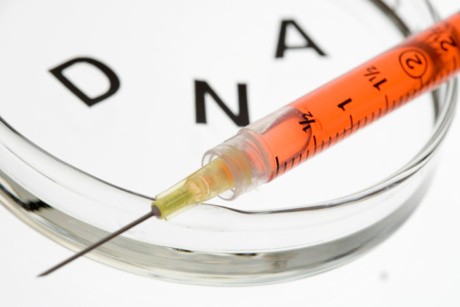Identification methods are including fingerprints, property, medical, dental, serology, and exclusion methods. In its development, the process has led to molecular forensics, a field of science that has only developed since the 1980s, known as fingerprinting DNA.
DNA touch identification material
Personal identification is a problem in both criminal and civil cases. Determining personal identity is very important in investigations because mistakes can have fatal consequences in the judicial process (Idries, 1997).
Specimens/samples that are widely used in DNA examinations to identify including blood / blood spots, sperm spots, vaginal swabs, buccal swabs, and bones (Kusuma, 2004).
Besides, the perpetrator accidentally or deliberately touched his skin with surrounding objects, resulting in a transfer of trace evidence to the object. One of the technologies is DNA touch or contact trace DNA. According to Wickenheiser (2002), DNA touch is simply DNA that is transferred through skin cells when objects are handled or touched. The average human performs the process of changing old to new cells, which is about 400,000 skin cells per day.
Personal identification through DNA touch examination (contact trace DNA) has not been widely known in Indonesia. Thus, this research is expected to provide answers for the effectiveness of using trace evidence as a forensic identification material.
The purpose of this study was to determine the DNA touch examination of personal identification materials through Polymerase Chain Reaction (PCR) method. The type of research used in this research is laboratory experimental to prove identification through DNA isolation from objects touched [DNA touch] at the amelogenin locus and among 13 loci of Short Tandem Repeat (STR) Combined Index DNA System (CODIS): TH01, TP0X, CSF1PO, with a transient research design.
The results of the DNA sample extraction were measured with DNA levels and purity of the sample DNA using a UV-Visible Spectrophotometer at a wavelength of 260 nm (λ260 nm). In this study, the results of DNA extraction-isolation from the buccal swab and property swab [watch/watch] obtained the mean DNA content of the buccal swab, namely 167.89 ± 85.71 ug/ml with an average DNA purity of 1.79 ± 0.71. Meanwhile, DNA samples from property swab [watch/watch] produced mean DNA levels: 59.19 ± 5.58 g / ml with mean DNA purity: 1.69 ± 0.76. The DNA samples were still in the minimum range of DNA levels for DNA typing, namely 0.25 ng with a virtue of 1.8-2 (Notosoehardjo, 1999: Butler, 2005). In addition to DNA levels, adequate quality of DNA is also required, and it must be in the least degraded condition (Butler, 2003). If the DNA is severely degraded, it will result in the primer unable to attach to the target DNA to be duplicated (Muladno, 2002).
In this study, using 3 STR CODIS loci, it showed that all samples on the buccal swab and property swab [watch/watch] showed positive detection, and the allele profile of each locus in each sample showed matched results. It has matched means that the allele profile on the buccal swab is identical to the allele profile on the swab property [watch/watch]. Only one sample at the locus showed a different allele, namely sample C [allele 8: 9,3 and allele 9; 9,3] .. This could be due to contamination in the DNA analysis process, starting from the collecting sampling process.
The conclusion is the swab ‘DNA Touch’ on the property of [watch/watch] can be an alternative material in forensic identification with the mean DNA level: 59.19 ± 5.58ug / ml. Visualization of Polymerase Chain Reaction [PCR] at the Short Tandem Repeat locus – Combined DNA Index System [STR- CODIS] loci: THO1, CSF1PO, TPOX on all buccal swab samples and watch/watch swabs showed positive detection results. Allele profiles at CODIS STR loci of loci: THO1, CSF1PO, TPOX through K562 positive control, all samples matched / identical, only in C sample THO1 locus there was one different allele.
Author: Ahmad Yudianto
Link:
https://www.scimagojr.com/journalsearch.php?q=19700174971&tip=sid&clean=0





